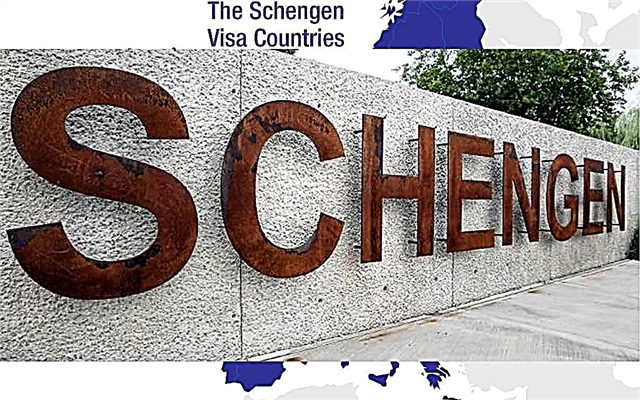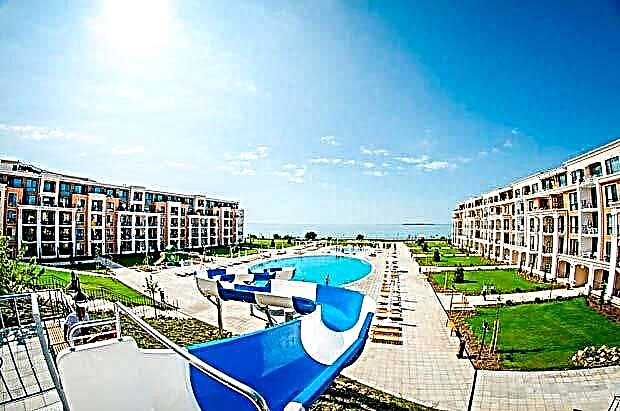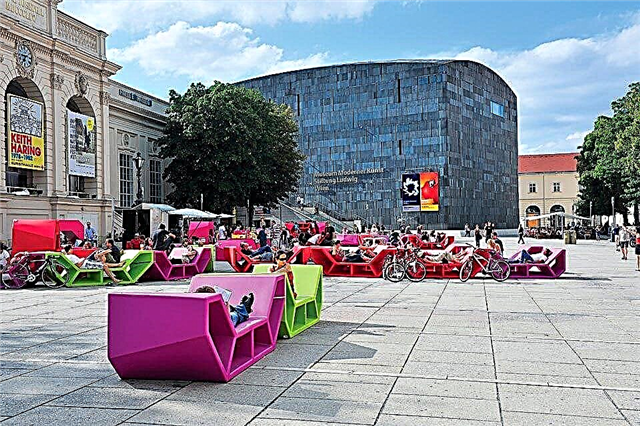If you have no more than 24 hours to get to know the unique sights of the Austrian capital, then we are ready to share a rich itinerary. You will see the most interesting places and are guaranteed to get a lot of positive emotions. Do not forget about comfortable shoes and clothes, charge your phone, because there are so many kilometers and colorful photos ahead. So, what you can see in Vienna in one day on your own.
Schonbrunn Palace

The architect B. von Erlach developed a project for a hunting country castle at the direction of Emperor Leopold I. At the end of the 17th century. the construction of the central building with 2 symmetrical wings began. A park was laid out in front of the main entrance (designed by J. Trechet). Under Maria Theresa, the palace became the summer residence of the imperial family. In the 18th century. a separate building for the theater was built in the courtyard. Under the leadership of Zh. Zhadot, a zoo was set up in the adjacent territory.
The park area is divided into:
- Crown Prince's Garden
- Chamber garden
- Dutch garden
- Orange garden
Visitors have the opportunity to explore famous sights: the Sibyl Cave, Roman ruins, a group of naiads, the house of doves, the Neptune fountain.
Visiting times:
- April - June - 8 am - 5.30 pm
- July - August - 8 am - 6.30 pm
- September - November - 8 - 17.30
- November – March - 8–17
Skip-the-line entrance to the palace - 54 €
Evening concert and dinner at Schönbrunn Palace - 81 €
Palace complex Belvedere

The famous philanthropist Yevgeny Savoysky commissioned I. von Hildenbrandt to build a summer residence. The plan provided for the construction of 2 buildings: the upper one for representative needs and the lower one for personal apartments. The space surrounding the palace was occupied by a magnificent park. Its landscape design was done by D. Girard. The complex was completed in 1725. At the end of the 18th century. the buildings housed a collection of court art. In the 20th century. Belvedere became a branch of the Austrian Gallery:
- in the lower part - baroque art (17-18 centuries)
- in the upper part - classical and modern art (19-20 centuries)
- in the greenhouse - medieval art (12-16th centuries)
Visiting times:
- Thursday-Tuesday 10 am - 6 pm
- Wednesday 10 am - 9 pm
A walk in the park during daylight hours is free.
St. Stephen's Cathedral

Stephansdom is one of the oldest buildings in the Austrian capital. The building dates from the mid-12th century. The church received the name of St. Stephen in 1220. The material for the towers was taken from ancient pre-Christian buildings, so they began to be called "Pagan". In the 14th Art. Albertine choirs in the Gothic style appeared near the basilica. In the 15th century. erected the South (Steffal) and North (Adlerturm) towers. Their presence testified that the church has the status of an episcopal or cathedral. The interior decoration work was carried out under the direction of A. Pilgram. He created a pedestal to house an organ and a pulpit for sermons.
For centuries, the voice of Stephansdom has been Pimerin, a bell made from a Turkish cannon. He announces the arrival of the New Year to the Viennese.
Cathedral parameters:
- length - 107 m.
- width - 70 m.
Open to visitors every day (except Sundays) from 6 am to 10 pm.
Hofburg palace complex

The Hofburg Palace has served as a residence for monarchs for centuries:
- Roman and Germanic emperors in the 15-19 centuries.
- Austro-Hungarian emperors in the 19-early. 20th century
There was a tradition according to which the new ruler could not occupy the apartments of his predecessor. Therefore, each monarch had his own rooms in the palace, and the building underwent repeated expansion and reconstruction. The Hofburg has no uniform style. The palace has 18 wings, 54 stairs, 19 courtyards, 2.6 thousand rooms and halls.
There are 2 types of entrance passes:
- single - 13.90 €;
- Sisi - 29.90 €.
Visitors are accepted daily:
- September - June from 9 am to 5.30 pm
- July - August from 9 am to 6 pm
Hundertwasser House

The famous Austrian artist, member of the Academy F. Hundertwasser, became famous for his denial of linearity and geometricity in architecture. He tried to express the main principles of modern design when developing the project of the Vienna residential building. The design turned out to be extraordinary, bright and memorable. The lines of the body are uneven, winding. The floors differ in color. Pieces of mirrors were used as material for decorating the facade surface.
The house was completed in 1985, D. Kravina was officially recognized as a co-author of the project. There are about 50 apartments in the building, accommodating up to 200 people. The house also houses offices, cafes, children's playrooms. There is a rooftop garden with flower beds and trees. There is a small fountain in front of the front part. It is almost impossible for outsiders to get inside the building and inspect it, because there is a strict privacy law.
Tourist card: discounts and free transport - 17 €
Hop-on hop-off bus tour - 29 €
Mozart concert at the Golden Hall of the Vienna Philharmonic - 50 €
Tourist card for 1, 2, 3, or 6 days - 70 €
Ferris wheel ticket - 12 €
Entrance tickets to Belvedere - 14 €
Vienna City Hall

The building to accommodate the city government was built in the 70s-80s of the 19th century. The competition for the best project was won by the German architect F. von Schmidt. They decided to build the house in the inner part of the city on Glacis Square. The external appearance of the building combines features of neo-gothic and eclecticism. Numerous patios are inherent in the Baroque style.
The body is distinguished by its significant dimensions:
- width 127 m.
- length - 152 m.
The town hall has its own tower, which reaches a height of 105 m. At its top, there is a figure of the standard-bearer Rathausmann, made of metal. The Iron Guard is considered the symbol of the city. The main ceremonial room of the town hall is the hall. It is used for a variety of special occasions. The interior is decorated with sculptural images of famous natives of Vienna. The building is open for free visits daily from 9 am to 9 pm. Special tours are held at 1 pm on Monday, Wednesday, Friday.
Natural History Museum and Fine Arts Museum

Both museums are located in the square dedicated to Empress Maria Theresa. They stand on opposite sides and outwardly resemble each other. The authors of the architectural projects and sketches of the interior space: Gottfred Semper and Hasenauer. The Kunstistorisches exposition presents objects of ancient cultures and civilizations (Etruscan, Greek, Egyptian, Roman, early Christian). The art gallery is proud of the canvases: Titian, Raphael, Caravaggio, Velazquez, Rembrandt, Bosch. Open 10 am-6pm daily (except Mondays). Admission fee for adults 15 €.
The Naturhistorikes Museum is based on the personal collections of Austrian monarchs. Halls await visitors:
- Geological
- Mineralogical
- Paleontological
- Prehistoric
- Botanical
- Zoological
- Anthropological
Young researchers of nature will be delighted with the Kindersaal exposition.
Naturhistorikes works:
- Thursday - Monday (9 -18.30);
- Wednesday (9-21).
Closed on Tuesdays.
Vienna Opera

The building of the opera house was designed by architects: A. Sikkardsburg, E. van der Nyul. The construction is made in the spirit of the Renaissance. Its opening took place in 1862, and the first performance was staged in 1869. Mozart's opera Don Giovanni was chosen for the premiere. During the bombing at the end of the war, the corps suffered significant damage. The restoration work was supervised by E. Boltenstern and Z. Kozak. In 1955, the Vienna Opera celebrated its rebirth. Beethoven's "Fidelio" sounded on the stage.
On the open gallery along the facade of the building, there are bronze statues (by E. Gachnel):
- Heroism
- Drama
- Fantasy
- Comic
- Love
The stage is decorated with an iron curtain depicting Orpheus and Eurydice.A sightseeing tour costs 6 €. It is held daily, except Sunday, and lasts 45 minutes.
Ticket prices depend on the performance and the place in the hall.
Vienna Philharmonic

The Philharmonic Orchestra of the Austrian Republic is widely known throughout the world. His metropolitan performances take place in the Golden Hall of the Vienna Philharmonic. The first musical institution in the Austrian capital began operating in the 19th century. The concert hall accommodated about 700 lovers of classical music. In the 50s. of the last century, a new philharmonic building was erected. It was named Musikverein. The author of the project was the Danish architect T. Hansen. The building is made in a neoclassical style. Its facade is decorated with numerous pilasters, columns, sculptures.
The inner space is designed for 1,744 spectator seats. The image of the Golden Hall of the Philharmonic can be seen on a gold coin minted in Austria.
Cashier opening hours (Monday - Friday):
- monthly - 9.30 - 15.30 and 1 hour before the start of the concert
- August - 10 am to 1 pm
- July - closed
Körntnerstrasse

The main pedestrian artery of the capital is the street named after the Austrian province of Carinthia - Körntnerstrasse. It runs through the central part of the city and is part of the golden half-ring, together with the streets of Graben and Kohlmarkt. The Carinthian Highway connects Karl Square and Stephansdom. The overpass appeared in the 13th century. It led from the center of the settlement to the Carinthian Gate.
The street is always crowded. Visitors are attracted by shops, cafes and hotels. The oldest building on Karintiyskiy Avenue is a palace that belonged to the Esterhazy family. Its construction was completed in the 17th century. Another famous landmark is the Todesco Palace. The Körntnerstrasse attracts theatergoers and music lovers from all over the world. The building of the famous Vienna opera house is located here. In addition, the street is a favorite place for shopping lovers. Tourists are advised to visit the largest souvenir shop in the city.
Neuer Markt

The open space in the city center was used in the old days for holding fairs. Most often, flour and food were traded there. Hence the name of the parade ground - Flour. In official documents, another nickname was fixed - Neuer Markt (New Square). Despite the name, in the historical chronicles the square is mentioned as far back as the 13th century. In the first half of the 20th century, a depot of the capital's tram was based on Neuer Markt. After the 40s. the track was removed.
The main tourist attractions of Novy Platz are:
- Church of the Capuchins (Capuchinekirche);
- Donner Fountain (Donnerbrunen).
The fountain, according to the idea of the architect G. Donner, is decorated with allegorical figures, denoting the deep rivers of the country:
- Annes
- Thrawn
- IBS
- Moravu
The sculpture of Providence rises in the center of the composition.
Plague pillar

Graben Square in the center of Vienna has long been used for celebrations and religious ceremonies. The open space is surrounded by buildings in baroque, neoclassical and floral styles. The main attraction of Graben is the Dreyfaltigkeitssaul ("Column of the Holy Trinity"). It was erected by order of Emperor Leopold I at the end of the 17th century. The reason for the establishment of the column was the miraculous deliverance of the inhabitants of the city from the terrible plague epidemic in 1679. Therefore, the memorial sign was popularly called “Pestsaule” (“Plague column”).
The original sign was made of wood. They were going to replace it with marble, but the Turkish war prevented it. The modern column is a pedestal with figures of three angels made of gilded copper. L. Burnachini, I. von Erlach, I. Bendel, J. Kiljan and others worked on the project.
Ferris wheel

In 1766, Emperor Joseph II opened the Prater Park to the public. The former protected area, intended for hunting monarchs, quickly turned into a favorite resting place for the Viennese. All kinds of attractions and establishments for a pleasant pastime were created on its territory. The culmination of the Prater's development was the construction of the Observation Wheel (Reisenrad) at the end of the 19th century.
The project of the giant Ferris wheel was developed by the English engineer W. Bassett. Its technical parameters:
- diameter - 61 m
- height - 64.75 m
- weight - 430.05 t
In the mid 40s. Reisenrad was destroyed. In 1947, the attraction was restored, and it still pleases visitors with a panoramic view of the city from above.
The opening hours of the attraction vary according to the seasons of the year:
- November - February it (10 - 20h.)
- May - September (9 am - midnight)
- March, April and October (10 am - 10 pm)
Museum quarter

Several museum institutions are concentrated in the Neubau area. The place of their concentration is called the Museumskwartier. It covers an area of 60 thousand square meters. The axis of the quarter is the building of the former imperial stables of the 18th century. They were no longer used for their intended purpose at the beginning of the last century and the premises were redesigned for exhibition purposes. In the 20-60s. the building was reconstructed and expanded. It became known as the Exhibition Pavilion. In 1985, the building hosted the festival. Various cultural events are often held on the territory of the quarter.
Currently, the complex consists of museums:
- contemporary art of the Ludwig foundation
- Kunsthalle
- named after Leopold
| Modern Art Museum | Kunsthalle | Leopold Museum | |
| Working hours | Monday 2 pm - 7 pm; Tuesday - Sunday 10 am - 7 pm; Thursday 10 am - 9 pm | Tuesday - Sunday 10-18h; Thursday 10-21 h | Wednesday, Friday-Monday 10-18h .; Thursday 10-21 h. Closed Tuesday. |
Liechtenstein palace

The idea of building a country residence belongs to Prince Johann Adam Andreas I of the Liechtenstein family. He bought a suburban area with a garden, so the castle is sometimes called the Garden one. The building design was selected in a special competition. It was attended by famous architects, incl. von Erlach, D. Rossi and D. Martinelli. Construction work was carried out at the end of the 17th century. The princely house is made in baroque style. Since the beginning of the 19th century. it turned into a private museum.
The building is divided into 2 floors:
- 1st floor - salon
- 2nd floor - apartments
Visitors are interested in the hall decorated with paintings depicting the exploits of the ancient Greek hero Hercules. It was designed by A. Pozzi. The palace is open to the public from 3 pm to 6.30 pm on Fridays, and the park from 7 am to 8.30 pm. Guided tours are available by prior arrangement.
Votivkirche church

Emperor Franz Joseph survived the assassination attempt in 1853. To celebrate the miraculous rescue of the monarch, his brother Maximillian vowed to build a basilica. They decided to name the church "Our Lord Savior" or Votivkirche. The construction of the cathedral lasted 13 years (1856-79). The author of the project is the architect G. Ferstel. Objects in the Gothic style became the model for the construction. The space inside the building is divided into three parts (nave). On the sides of the central building there are 2 towers (99 m in height).
Visitors have the opportunity to explore the main attractions of the cathedral:
- a tombstone at the grave of the defender of Vienna, Count Niklas Salm (author L. Goering);
- altar from Antwerp 15th century
Kirkha is open to visitors:
- Tuesday-Friday from 4 pm to 6 pm
- Saturday from 10 am to 1 pm
There is a free guided tour at 11 am on the last Saturday of every month (excluding May).
As you can see, Vienna keeps many secrets and is, in fact, a citadel of various areas of architectural art. A rich history, striking historical figures have made the Austrian capital interesting for any tourist who is lucky enough to be here, even if passing through.











